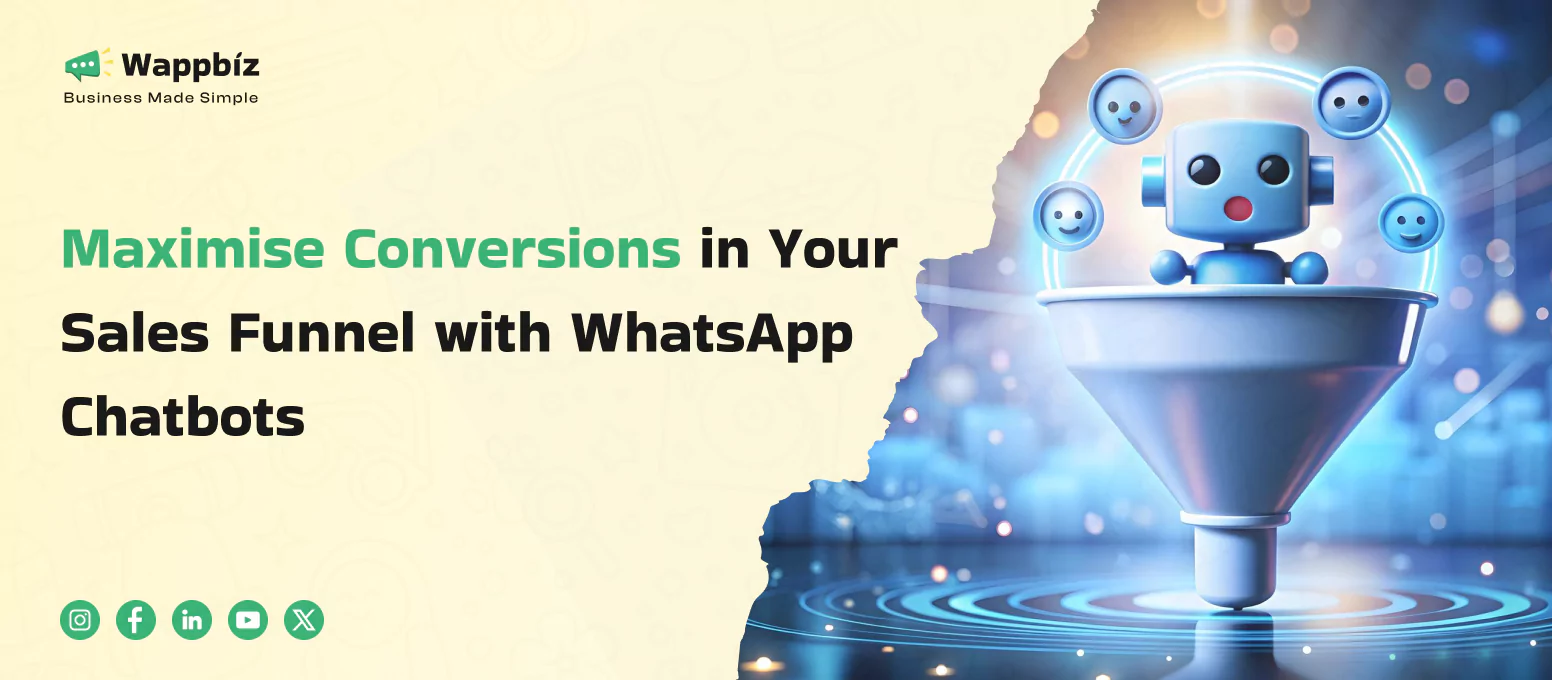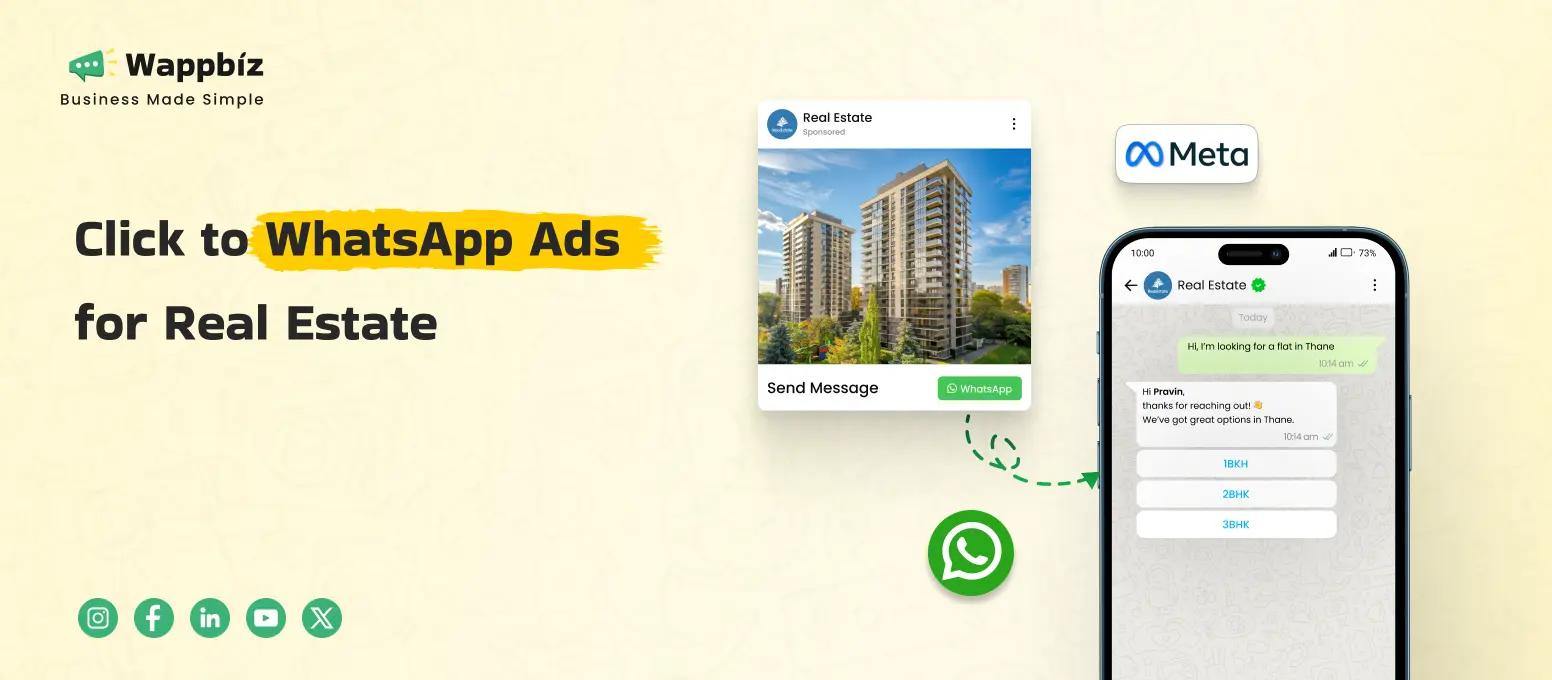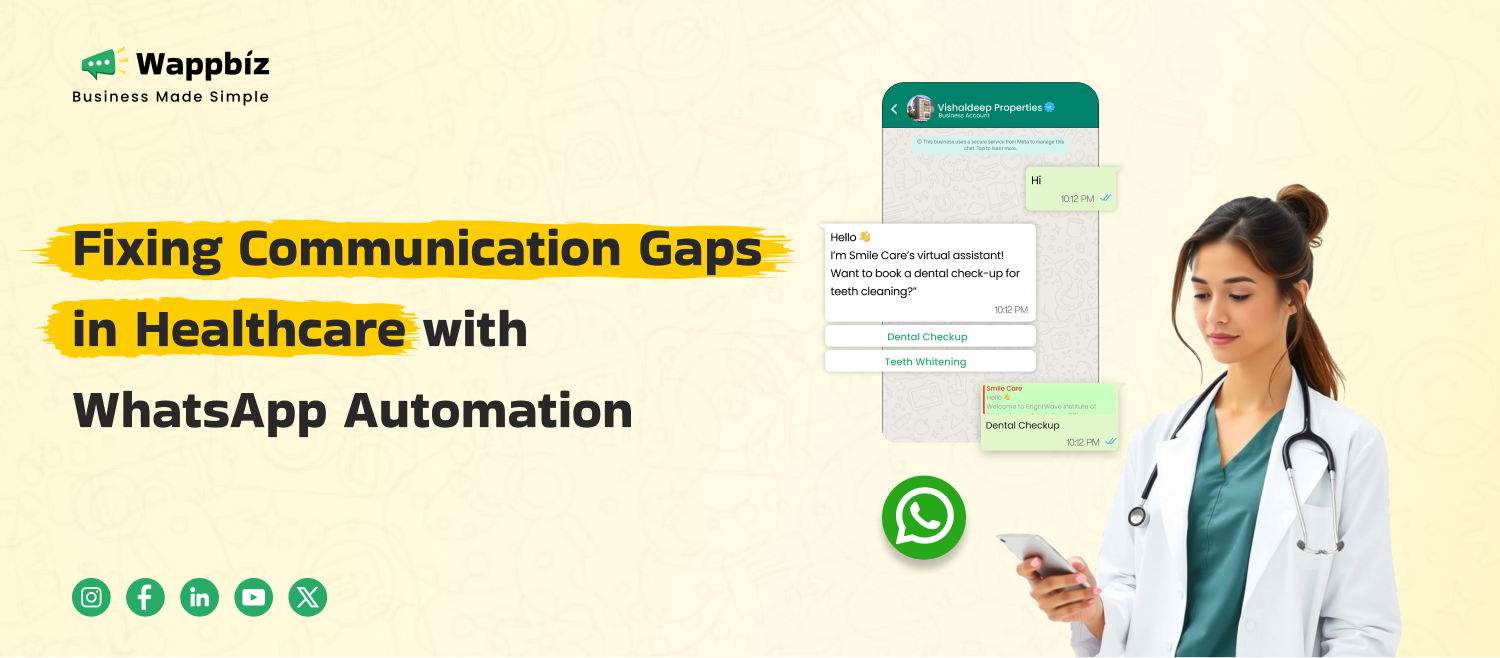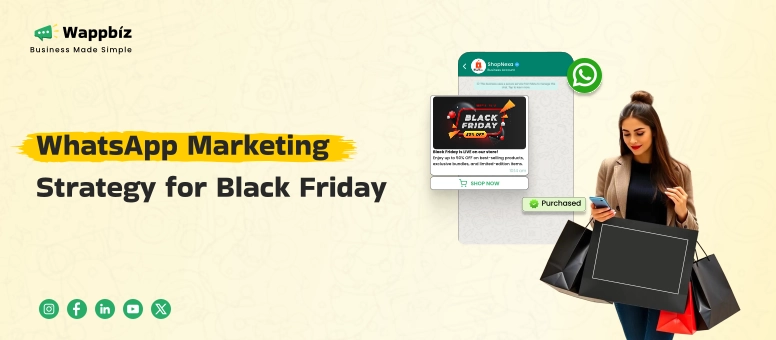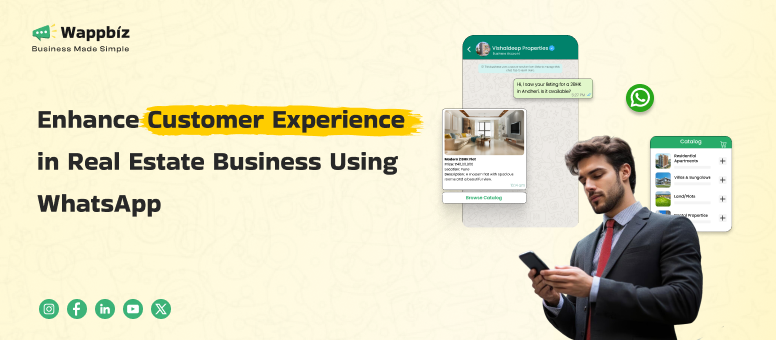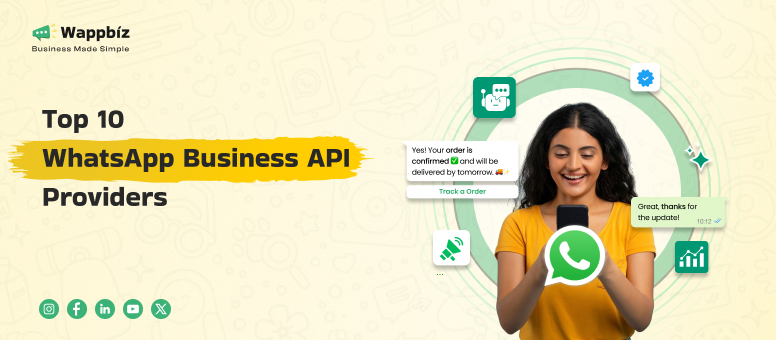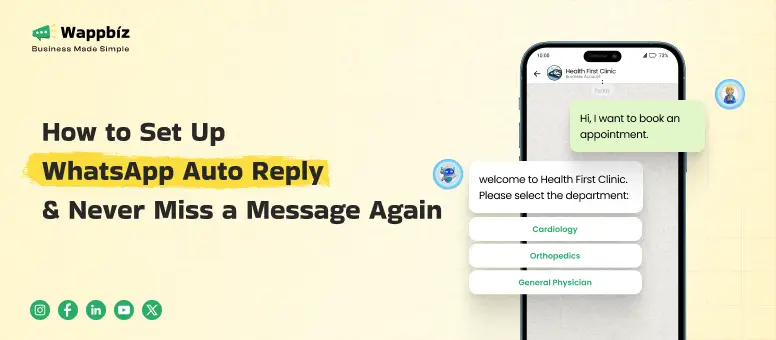During the festival fair in childhood, we might have played a lucky draw game where each booth had an opportunity to win something extraordinary and make it more interesting. Similarly, each step in a sales funnel can turn curious visitors into loyal customers and excite them about providing value and benefits of the product or services.
Have you ever thought how effective a sales funnel could be for visitors when they become loyal customers and purchase your product or services frequently for a long period after you prove value to them?
Let me tell you the most interesting part: everyone knows WhatsApp, but only a few people think that WhatsApp is the most powerful tool that brings more convergence since it helps transform it into a more personalized and engaging form. Today we will explore the WhatsApp sales funnel, ways to create a WhatsApp sales funnel, sales funnel in digital marketing, stages of the sales funnel, and implementation of WhatsApp chatbot in the sales funnel.
Are you excited about this interesting journey that will enlighten you about the WhatsApp sales funnel and help you take your business to the next level? Let’s dive into the WhatsApp sales funnel in detail.
What is a Sales funnel?
Before explaining the WhatsApp sales funnel, let me give you an idea. A sales funnel is a journey of customers from the initial awareness stages of the product or services to the final purchasing stage. It is a visual representation of the process where, at the top, you have a wide opening to attract potential customers with your marketing strategies. As they move down the funnel, their interests narrow until they reach the bottom, becoming paying customers. Also, this journey can be made more interesting and enjoyable through the WhatsApp sales funnel, enhancing communication and engagement at every step of the funnel.
Wappbiz can boost your business through WhatsApp Sales Funnel and implement unique marketing strategies! Start your Free Trial Now
What is a WhatsApp sales funnel?
A WhatsApp sales funnel is also a step-by-step journey for customers from the initial awareness stages of the product or services to the final purchasing stage through the WhatsApp process.
The WhatsApp funnel uses the platform’s unique features to create personalized communication and engagement throughout all the funnel stages.
Today’s generation has a petite patient, and that’s the reason people want instant interaction. Here comes a WhatsApp chatbot that solves this major problem by providing instant messages in a personalized way to engage, answer their queries, and nurture leads. Emails and Facebook are the traditional methods, whereas WhatsApp focuses on direct and meaningful conversations.
How to Create a WhatsApp Sales Funnel?
Creating a successful WhatsApp sales funnel requires a mix of strategy and creativity, which can be a game-changer in this industry. It can transform how customers connect and make them more engaging and exciting throughout the journey.
What are the 7 stages of a sales funnel?

Research: Define Your Audience
Understanding our audience’s interests, challenges, and preferences will make it easier to target them through our WhatsApp sales funnel. You can create a detailed customer persona that helps you craft resonating messages.
Awareness: The Spark of Interest
Imagine someone scrolling through their social media feeds and suddenly stumbles upon your eye-catching ad or post, and now they might be curious after noticing your brand. Here the mission is to grab attention and compel them to reach out. Using engaging visuals and inviting messages will gain attention and encourage them to send you a WhatsApp message.
Interest: Building the Connection
Once they’re aware, now it’s time to engage them through greetings and providing value. When customers message you on WhatsApp, greet them with warmth and friendliness. Also, inform them about your products and services and invite them to ask questions. Most importantly, offer them free value through digital products (eBooks, templates, WhatsApp marketing scripts) and video formats, identifying their pain points and addressing them with proper solutions. This is the best opportunity to make a great first impression and show that you’re eager to help them throughout their business journey.
Consideration: Nurturing Their Decision
At this stage, your potential customers are weighing their options, and they might be comparing your brands with what you offer that is unique from other brands. Here come the personalized interactions, and you can use WhatsApp to share customer testimonials, address their questions, and highlight your unique offerings. The main goal is to make them feel valued and understood at this stage.
Intent: The Moment of Interest
Now, your outlook is leaning towards making a purchase. They may have queries regarding pricing, comparison, availability, and demo requests. Keep them engaged and excited about the product or services throughout the journey by providing them with offers and discounts for a limited time as a sense of urgency and motivating them to buy your service or product. If a new feature is launched, inform them of new features with proven results.
Conversion: The Final Step
The most gripping part is that your leads are ready to purchase your product or services. So, ensure you provide clear payment options directly through WhatsApp and be available to answer any last-minute questions. An effortless experience can turn your first-time buyers into loyal and repeat customers.
Post-purchase: building loyalty
Congratulations! I hope following the above instructions you purchase your product. This is your success journey, which has just started. Now maintain consistency throughout your customers’ journey because this strategy will help you become loyal and repeat customers for a lifetime. You can use WhatsApp to thank your customers, ask for feedback, and share exclusive offers for their next purchase. This stage is about building customer relationships and inspiring them to repeat purchases.
Following these steps, you can create meaningful interactions that guide potential customers on their journey and generate more conversions.
WhatsApp Sales Funnel: Real-life Examples
Every industry’s stage of creating a WhatsApp sales funnel is similar to the above seven stages. To better grasp how this sales funnel works, let me help you with real-world examples:
Example 1: E-commerce Sales Funnel
Imagine an online stationery store running a social media ad and encouraging users to message them on WhatsApp for exclusive discounts. After messaging, a chatbot warmly greets them, shares the discount code, and showcases available best-selling. This can lead to upselling by suggesting complementary available items.
As the conversation continues, the chatbot sends reminders about “limited stock” or “limited deal” in a highlighted format, creating urgency and driving sales. The brand guides potential customers towards conversion using this WhatsApp instant chatbot feature of the WhatsApp sales funnel.
Example 2: SaaS Sales funnel
Suppose a company offers a website and app-building software with drag-and-drop features. They run social media and encourage users to message them on WhatsApp for the exclusive free trial with no credit card required. When a user messages, a chatbot greets them, explains the software’s key features, and provides the link to activate their extended trial.
The chatbot then asks about the user’s specific needs and suggests how the software’s premium features can help solve their problems, nudging them toward higher-tier plans. As the trial period progresses, the chatbot sends reminders about upcoming subscription discounts or special offers, creating urgency and encouraging users to upgrade to a paid plan.
Through this WhatsApp sales funnel process, the SaaS company builds relationships and guides users toward converting from trial to paid customers.
Example 3: Offline Service-Based Sales Funnel
Now let’s look at a local gym that uses WhatsApp to offer free fitness consultations. When a user messages, the chatbot schedules appointments, shares workout tips, and presents promotional memberships. This personal touch builds trust and encourages prospects to commit.
In all three scenarios, the WhatsApp sales funnel turns the initial customer journey into a personalized experience that nurtures leads effectively.
How to Implement WhatsApp Chatbots in Your Sales Funnel?
A WhatsApp chatbot can help build customer relationships and trust, nurture leads, and drive more conversions. Here is the step-by-step process:

a. Set up the WhatsApp Business API.
You need to set up the WhatsApp Business API to connect your chatbot. Platforms like Wappbiz allow you to build and integrate chatbots into WhatsApp.
b. Map Out Your Customer Journey
Next, outline the path your customers will take in your WhatsApp sales funnel. Consider where they will enter (e.g., from social media ads or your website) and how the chatbot will interact with them at each stage, whether generating leads, nurturing interest, or closing sales.
c. Create automated responses for each stage.
Make sure you design your chatbot to handle different parts of the funnel. For example:
- Awareness Stage: Greet users with a friendly message, offering a free trial or a product demo.
- Consideration Stage: Send them reminders about product benefits, special offers, or personalized suggestions based on their needs.
- Decision Stage: Use urgency like a “limited-time discount” to encourage them to purchase. The chatbot should make it easy for users to buy directly within WhatsApp.
d. Personalize the Experience
Your chatbot should ask questions that help understand the user’s specific needs. Based on their responses, the bot can give more tailored recommendations, creating a more personal experience that increases engagement.
e. Set up follow-ups and reminders.
Automated follow-up messages should be sent to the users who haven’t completed a purchase. This can include reminders about expiring free trials, upcoming offers, or new features. These follow-ups help to create urgency and encourage users to move forward.
f. Allow Human Handover
While chatbots can handle most tasks, sometimes users need help from a real person. Ensure the chatbot can easily transfer the conversation to a live agent when necessary, ensuring a smooth experience for more complex inquiries and showing a green online signal to ensure the agent is online.
g. Monitor, Analyze, and improve.
Keep track of how well your WhatsApp chatbot is performing by looking at metrics like response rates, engagement, and conversions. You can use this information to adjust and improve the chatbot’s flow and make it more effective towards your convergent ratio.
Adding a WhatsApp chatbot to your sales funnel can automate key interactions, engage users with personalized content, and guide them smoothly from the first touchpoint to the final purchase.
Ready to optimize your funnel with the WhatsApp chatbot feature? Join Wappbiz and watch your business thrive with innovative WhatsApp marketing!
Conclusion
If you came across this part, I hope you are interested in taking your business to the next level with WhatsApp Sales Funnel. Using the right tools and strategies can create a powerful WhatsApp sales funnel that boosts engagement and conversions. The most attractive part of the WhatsApp sales funnel is personalized communication that resonates with today’s consumers.
Still not convinced?
Book a Free Consultation with Our Expert
FAQs
Is a Sales Funnel a CRM?
No, a sales funnel and a CRM are different. As we discussed, the sales funnel is a journey of customers from the initial awareness stages of the product or services to the final purchasing stage. A CRM(Customer Relationship Management) system is a business tool that helps manage customer information and interaction. In short, a funnel is about the customer journey and CRM systematically manages that journey.
Who Needs a Sales Funnel?
A sales funnel is required by a business that sells products or services. It doesn’t matter whether your business is small or large, a sales funnel guides your potential customers towards purchasing the product or services.
Why Use a Sales Funnel?
A sales funnel helps you understand your customers’ behavior and fix areas where people lose interest in buying your products or services. It’s a smart and automatic move in the current marketing era, leading to better conversions and sales.

